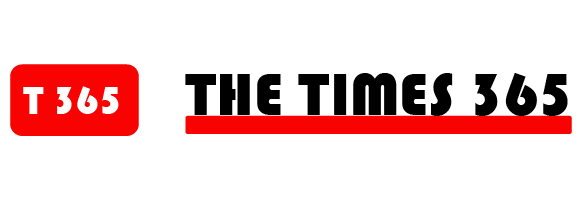Affiliate links for the products on this page are from partners that compensate us (see our advertiser disclosure with our list of partners for more details). However, our opinions are our own. See how we rate mortgages to write unbiased product reviews.
- Mortgage rates for October 3, 2024, remain near 5.90%, according to Zillow data.
- Rates are slightly higher compared to last month, but remain relatively low overall.
- Because the labor market remains strong, mortgage rates might not drop much more this year.
Mortgage rates have been holding steady this week and are slightly higher than they were last month, when 30-year rates averaged 5.74%, according to Zillow data.
Rates dropped substantially last month ahead of the Federal Reserve’s meeting, where the central bank lowered the federal funds rate by 50 basis points. But now that this cut has happened and future Fed cuts are already priced in, mortgage rates might not go down much more this year unless the economic outlook changes.
For rates to go lower, the labor market would likely need to show signs of weakening. But so far this month, conditions appear to be strong. On Wednesday, ADP reported that private sector employment increased more than expected in September. And recent data from the Bureau of Labor Statistics showed that job openings increased in August.
What Are Today’s Mortgage Rates?
| Mortgage type | Average rate today |
|
|
|
|
|
|
|
|
|
|
|
|
|
|
|
|
|
|
|
|
|
What Are Today’s Mortgage Refinance Rates?
| Mortgage type | Average rate today |
|
|
|
|
|
|
|
|
|
|
|
|
|
|
|
|
|
|
|
|
|
Mortgage Calculator
Use our free mortgage calculator to see how today’s mortgage rates will affect your monthly and long-term payments.
Mortgage Calculator
$1,161
Your estimated monthly payment
- Paying a 25% higher down payment would save you $8,916.08 on interest charges
- Lowering the interest rate by 1% would save you $51,562.03
- Paying an additional $500 each month would reduce the loan length by 146 months
By plugging in different term lengths and interest rates, you’ll see how your monthly payment could change.
Current 30-Year Mortgage Rates
Average 30-year mortgage rates are hovering around 5.90%, according to Zillow data. Rates have been trending down for several months now, and they averaged around 6.05% in August.
The 30-year fixed-rate mortgage is the most popular home loan. With this type of mortgage, you’ll pay back what you borrowed over 30 years, and your interest rate won’t change for the life of the loan.
The lengthy 30-year term allows you to spread out your payments over a long period of time, meaning you can keep your monthly payments lower and more manageable. The trade-off is that you’ll have a higher rate than you would with shorter terms, like a 15-year mortgage.
Current 15-Year Mortgage Rates
Average 15-year mortgage rates are in the low 5% range, according to Zillow data. In August, 15-year rates averaged 5.38%, but they’ve been trending lower so far this month.
If you want the predictability that comes with a fixed rate but are looking to spend less on interest over the life of your loan, a 15-year fixed-rate mortgage might be a good fit for you. Because these terms are shorter and have lower rates than 30-year fixed-rate mortgages, you could potentially save tens of thousands of dollars in interest. However, you’ll have a higher monthly payment than you would with a longer term.
Current Mortgage Refinance Rates
Refinance rates have also been lower in recent weeks. Last month, 30-year refinance rates averaged 5.89%, while 15-year refinance rates were around 5.19%.
How Much Do Mortgage Rates Need to Drop to Refinance?
If you’re wondering if you should refinance now that mortgage rates have dropped a bit, you’ll need to crunch the numbers to see if it makes sense. Some experts advise only refinancing if you can reduce your rate by a percentage point or more, but it really comes down to whether it works for your individual circumstances.
If you can save enough each month by refinancing that you can recoup your costs in a reasonable amount of time, it might be worth it. You can calculate this by dividing your closing costs by the amount you’re saving on your monthly mortgage payment. So, if you paid $3,000 to refinance and were able to lower your monthly payment by $200, it would take you 15 months to break even on your refinance.
5-Year Mortgage Rate Trends
Here’s how 30-year and 15-year mortgage rates have trended over the last five years, according to Freddie Mac data.
What Factors Influence Mortgage Rates?
Mortgage rates are determined by a variety of different factors, including larger economic trends, Federal Reserve policy, your state’s current mortgage rates, the type of loan you’re getting, and your personal financial profile.
While many of these factors are out of your control, you can work on improving your credit score, paying off debt, and saving for a larger down payment to ensure you get the best rate possible.
How Does the Fed Rate Affect Mortgage Rates?
The Fed increased the federal funds rate dramatically in 2022 and 2023 to try to slow economic growth and get inflation under control. Inflation has since slowed significantly, but it’s still a bit above the Fed’s 2% target rate.
Mortgage rates aren’t directly impacted by changes to the federal funds rate, but they often trend up or down ahead of Fed policy moves. This is because mortgage rates change based on investor demand for mortgage-backed securities, and this demand is often impacted by how investors expect Fed policy to affect the broader economy.
Fed officials began lowering the federal funds rate at their meeting in September, and they’re expected to lower it more at upcoming meetings. This has helped mortgage rates trend down this month.
When Will Mortgage Rates Go Down?
Most major forecasts expect mortgage rates to go down, but they may not drop a lot in the near term. We should see rates fall in 2025.
Mortgage rates started ticking up from historic lows in the second half of 2021 and increased dramatically in 2022 and throughout most of 2023. But now that inflation has decelerated and the Fed is expected to cut rates soon, mortgage rates have trended down. In the last 12 months, the consumer price index rose by 2.5%. This is a significant slowdown compared to when it peaked at 9.1% in 2022.
How much rates go down depends on how the economy evolves. If economic conditions remain stable, mortgage rates may not fall as much. But if the labor market weakens and the Fed has to cut rates more aggressively, we could see rates drop substantially.
Rates are unlikely to drop back down to the historic lows of 2020 and 2021, when 30-year fixed rates fell below 3%. But we could see them settle in close to 5% in the next few years.
Will Home Prices Drop in 2024?
We aren’t likely to see home prices drop anytime soon thanks to extremely limited supply. In fact, they’ll likely rise this year as mortgage rates drop.
Fannie Mae researchers expect prices to increase 6.1% in 2024, while the Mortgage Bankers Association expects a 3.9% increase in 2024.
Lower mortgage rates will bring more buyers onto the market, putting upward pressure on prices. But prices aren’t expected to increase as much as they have in recent years.
How to Choose a Mortgage
You have a lot of options when it comes to finding the right type of mortgage for you. First, you’ll need to decide if you want a fixed-rate mortgage or an adjustable-rate mortgage.
Fixed-rate mortgages lock in your rate for the entire life of your loan. Adjustable-rate mortgages lock in your rate for the first few years, then your rate can go up or down periodically based on market conditions.
Fixed-Rate vs. Adjustable-Rate Mortgage Pros and Cons
How do you choose between a fixed-rate vs. adjustable-rate mortgage?
ARMs often (but not always) start with lower rates than fixed-rate mortgages, but ARM rates change once your fixed-rate introductory period is over. If you plan on moving or refinancing before the rate adjusts, an ARM could be a good deal. But keep in mind that a change in circumstances could prevent you from doing these things, so it’s a good idea to think about whether your budget could handle a higher monthly payment.
Fixed-rate mortgages are a good choice for borrowers who want stability, since your monthly principal and interest payments won’t change throughout the life of the loan (though your mortgage payment could increase if your taxes or insurance go up).
But in exchange for this stability, you may get a higher rate. This might seem like a bad deal right now, but if rates increase further down the road, you might be glad to have a rate locked in. And if rates trend down, you may be able to refinance to snag a lower rate.
Conventional vs. Government-Backed Mortgages
Conventional mortgages are home loans that aren’t backed by a government agency. They’re often a good option for borrowers with strong credit scores. Conventional loans allow down payments as low as 3%, though putting at least 20% down will allow you to avoid paying for private mortgage insurance.
The main types of government-backed mortgages are:
- FHA loans: Allow credit scores down to 580 and 3.5% down payments
- VA loans: Require no down payment, but are only available to veterans and military members who meet minimum service requirements
- USDA loans: Also allow 0% down for low-to-middle income borrowers who live in an eligible rural or suburban area
Government-backed mortgages are often a good choice for borrowers with low credit scores, first-time homebuyers, or those who don’t have a lot of money saved for a down payment. They also typically have lower mortgage rates compared to conventional loans.
Choosing a Term Length
You’ll also need to decide what term length you want. Your mortgage term is how long you have to pay back the loan. Most borrowers get a 30-year term, since it’s the longest term available and results in the lowest monthly payment.
Shorter terms, like a 15-year mortgage, can be a good option if you’re looking to save money on interest. But because you’re paying off the loan in half the amount of time you have with a 30-year mortgage, your monthly payments will be much higher.






